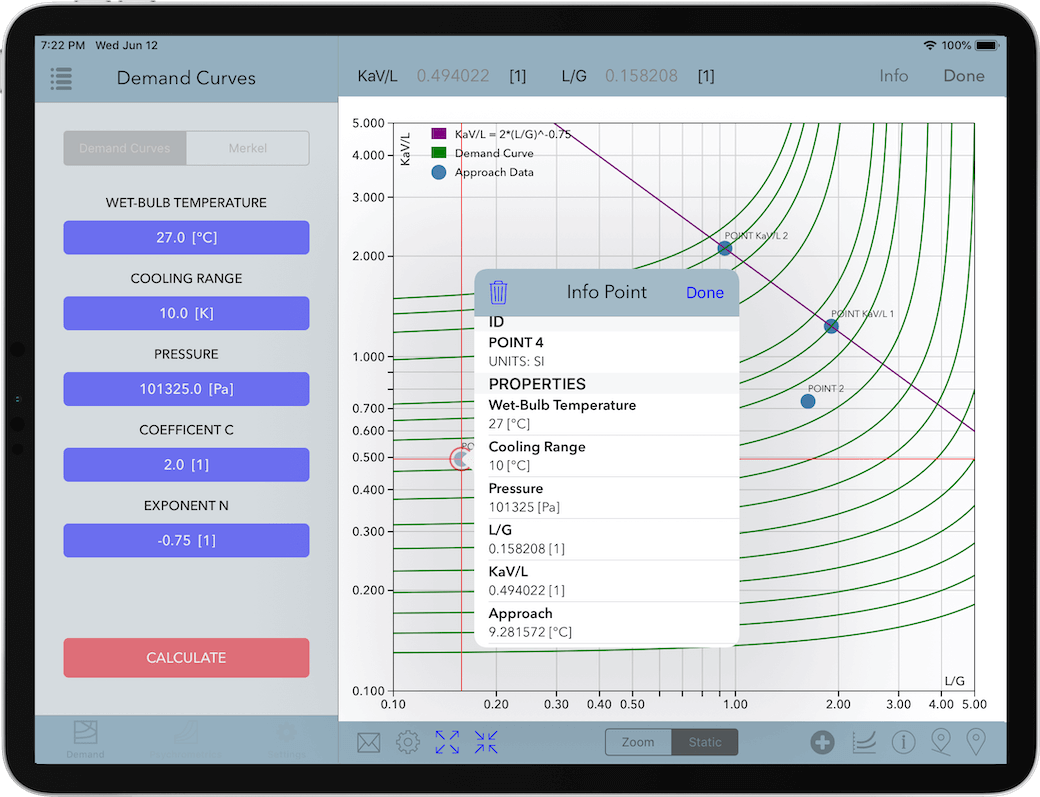


Have you learned about Cooling Tower Calculations? It’s time to test your knowledge on Cooling towers. Cooling Tower Makeup has to substitute the water losses resulting from Evaporation, Windage and Blowdown. If it is not available it may be assumed asįor Natural Draft Cooling Tower D = 0.3 to 1.0 * C /100įor Induced Draft Cooling Tower D = 0.1 to 0.3 * C /100įor Cooling Tower with Drift Eliminator D = 0.01* C /100 Cooling Tower Mass Balance – makeup waterĬooling tower mass balance gives an idea about make-up water requirement. H V = Latent heat of vaporization = 2260 kJ / kg Windage or Drift Loss Calculationĭrift loss of the cooling tower is normally provided by the cooling tower manufacturer based on the Process design. The amount of heat removed by evaporative cooling is Q = m x Hv is E x H V The amount of heat to be removed from Circulating water according to Q = m C p DT is C x C p x R.

(Reference: Perry’s Chemical Engineers Hand Book )Īlternatively, The Evaporation loss can be calculated from the heat balance across the cooling tower. Varies from 3.0 to 7.0 depending upon Manufactures Guidelines Evaporation Loss CalculationĮvaporation Loss in the cooling tower is calculated by the following empirical equation. Blowdown can be calculated from the formula:ĬOC = Cycle of Concentration. Blowdown is the function of Cycle of concentration. To control the Cycle of Concentration blow down is given. Draw off or BlowdownĪs the cooling water circulates the cooling tower part of water evaporates thereby increasing the total dissolved solids in the remaining water. At the same time, the higher cycle of concentration increases the dissolved solids concentration in circulating cooling water which results in scaling and fouling of process heat transfer equipment. It is advisable to keep the Cycle of concentration as high as possible to reduce the makeup water requirement of the cooling tower. The cycle of concentration normally varies from 3.0 to 7.0 depending on the Process Design. It can be calculated from any the following formulae.ĬOC= Silica in Cooling Water / Silica in Makeup WaterĬOC = Ca Hardness in Cooling Water/ Ca Hardness in Makeup waterĬOC = Conductivity of Cooling Water / Conductivity of Makeup water It is a ratio between parameter in Cooling Water to the parameter in Makeup water. The cycle of concentration is a dimensionless number. This includes determination of cycle of concentration, Evaporation loss, Drift or Windage Loss, Blow down water requirement makeup water requirement. In summer the ambient air wet bulb temperature raises when compared to winter thus limiting the cooling tower efficiency. (Hot Water Temperature – Wet bulb temperature)Ĭooling Tower Efficiency = Range/ (Range + Approach) x 100 (Hot Water Temperature – Cold water Temperature) x 100/ In practice, the cooling tower efficiency will be in between 70 to 75%. This requires very large tower and results in huge evaporation and windage or drift loss resulting in a practically not viable solution. This is practically not possible to achieve. In the ideal case, the cold water temperature will be equal to the wet-bulb temperature. Cooling tower efficiency is limited by the ambient wet bulb temperature. The calculation of cooling tower efficiency involves the Range and approach of the cooling Tower. Range = Hot Water Temperature – Cold Water Temperature The difference between the Hot Water Temperature (Cooling Tower Inlet) Temperature and Cold water (Cooling Tower Outlet) temperature is called Cooling Tower Range. The difference between the Cold Water Temperature (Cooling Tower Outlet)Īnd ambient Wet Bulb Temperature is called as Cooling Tower Approach.Īpproach = Cold Water Temperature – Wet Bulb TemperatureĬooling Tower approach is the better indicator of the performance. We shall see those terminologies in Detail. The performance of the cooling tower depends on various parameters like Range & Approach. They reject process heat from the cooling water to atmosphere and keep the water cool. Cooling Tower plays a major role in Chemical Process Industry. Get unlimited access to 5,000+ magazines, newspapers and curated premium stories at flat 55% offĬooling Tower Efficiency Calculation is described in this article.


 0 kommentar(er)
0 kommentar(er)
